mNo edit summary |
mNo edit summary Tags: Manual revert Mobile edit Mobile web edit |
||
| (242 intermediate revisions by the same user not shown) | |||
| Line 1: | Line 1: | ||
'''Welcome to Japanifornia's {{SITENAME}}''' where we track Japanese American (Nikkei) character actor's appearances in the early days of Asian Representation—some good, some cringe, but all interesting. See our listings for shows like [[:Category:M*A*S*H|M*A*S*H]] or [[:Category:Hawaii Five-O|Hawaii Five-O]] from the 1960s and 1970s. | |||
[[ | As of {{CURRENTDAY}} {{CURRENTMONTHNAME}} {{CURRENTYEAR}} this wiki contains a total of [[Special:Statistics|{{NUMBEROFARTICLES}}]] articles. | ||
[[ | Check Out: [[Marvel_Stories_Set_in_Japan]] | ||
[[ | <!-- STRAPLINE IMMEDIATELY BELOW BANNER --> | ||
{| id="mp-strapline" style="width:100%; background:none; margin:-.8em 0 -.7em 0;" | |||
| style="font-size:95%; padding:10px 0; margin:0; text-align:left; white-space:nowrap; color:#000;" | [[:Special:Random|Random Page]] | |||
| style="font-size:95%; padding:10px 0; margin:0; text-align:right; white-space:nowrap; color:#000;" | | |||
[[Special:RecentChanges|Recent Changes]] '''·''' [[:Category:Needs_Love|Needs Love]] '''·''' [[Special:Categories|Categories]] '''·''' [[:Category:Collections|Collections]] | |||
|} | |||
<!-- Main Write Up on Homepage --> | |||
<!-- 3x3 Tiles to Collections --> | |||
{| | |||
|- style="vertical-align:top; style=margin: auto;"; | |||
<!-- Row 1 --> | |||
|- style="vertical-align:top;" | |||
[[ | | style="height:140px; width:33%; text-align:center;" | | ||
[[File: Hāfu_wiki-tiles.png|frameless|center|300px|link=|Edna Mode]] | |||
===[[:Category:Hāfu | Hāfu]]=== | |||
People (and characters) who are half Japanese. | |||
[[ | | style="height:140px; width:34%; text-align:center;" | | ||
[[File: Nikkei_wiki-tiles.png|frameless|center|300px|link=|Jack Soo]] | |||
[[ | ===[[:Category:Nikkei | Nikkei]]=== | ||
People of Japanese ancestry born, or living long-term, outside of Japan. | |||
[[ | | style="height:140px; width:33%; text-align:center;" | | ||
[[File: West-in-Japan_wiki-tiles.png|frameless|center|300px|link=|Bad News Bears Go To Japan]] | |||
===[[:Category:Gaijin in Japan | Gaijin in Japan]]=== | |||
Non-Japanese in Japan. | |||
<!-- Row 2 --> | |||
= | |- style="vertical-align:top;" | ||
[[ | | style="height:140px; width:33%; text-align:center;" | | ||
[[File: Nihonjin wiki-tiles.png|frameless|center|300px|link=|Nihonjin in the West]] | |||
===[[:Category:🇯🇵 | Nihonjin in the West]]=== | |||
Japanese born in Japan, often living outside of Japan, who have achievements associated with their time outside of Japan | |||
=== | | style="height:140px; width:34%; text-align:center;" | | ||
[[File: Japanifornia wiki-tiles.png|frameless|center|300px|link=|Japanifornia Locations]] | |||
===[[:Category:Fictional Places | Japanifornia Locations]]=== | |||
Locations that exist in the Japanifornia Universe, from video game settings to fictional movie locations. | |||
[[ | | style="height:140px; width:33%; text-align:center;" | | ||
[[File: Interned_wiki-tiles.png|frameless|center|300px|link=|George Takei]] | |||
===[[:Category:Nikkei who were interned | Nikkei who were Interned]]=== | |||
Notable Japanese Americans who spent time in an American Internment Camp during WWII. | |||
<!-- Row 3 --> | |||
|- style="vertical-align:top;" | |||
= | | style="height:140px; width:33%; vertical-align: top; text-align:center;" | | ||
[[File: 1970s wiki-tiles.png|frameless|center|300px|link=|Helen Funai]] | |||
===[[:Category: The 1970s | The 1970s]]=== | |||
The Age of Independence: When kids roamed free, TV was on a strict schedule, and the music was on vinyl. I lived in the mid-west and found my movies on UHF channels, usually on Saturday afternoons. | |||
| style="height:140px; width:34%; vertical-align: top; text-align:center;" | | |||
[[File: 1980s wiki-tiles.png|frameless|center|300px|link=|Mr. Miyagi]] | |||
===[[:Category: The 1980s | The 1980s]]=== | |||
The Cable Age: So many channels, so little that's good. We made mix tapes and bumped them in our Sony Walkman or car stereo. I was living in Baltimore or going to college in New York. | |||
| style="height:140px; width:33%; vertical-align: top; text-align:center;" | | |||
[[File: 1990s wiki-tiles.png|frameless|center|300px|link=|E. Honda]] | |||
===[[:Category: The 1990s | The 1990s]]=== | |||
The Console Age: Alternative lifestyles, and the rise of the Digital Age. Our music was on CD, which you could buy new or used. We wore a lot of flannel and black jeans. I, myself, lived in San Franokyo. | |||
|} | |||
Suggested Starting Points: | |||
* [[:Category:Japanese Comic Book Characters|Japanese Comic Book Characters]] | |||
* [[Japanese in Pop Culture|Japanese in American Pop Culture]] | |||
We | We tend to follow rabbit holes for Japanese and Japanese American character actors from the 70s and 80s. | ||
== | ===Japanifornia Icons=== | ||
* [[ | * [[Miyoshi Umeki]] the first Eastr-Asian actor to win an Academy Award for her role in Sayonara in 1957. | ||
* [[ | * [[Larry Shinoda]], a Japanese American car designer who designed the Chevrolet Corvette and the Ford Mustang. | ||
* [[Yuri Kochiyama]] an American Civil Rights activist who worked with Malcom X in Harlem. | |||
* [[Hiroshi Fujiwara]], the Godfather of Streetwear from Japan, who collaborated with Tinker Hatfield and Mark Parker at Nike to produce the HTM sub-brand. | |||
* [[Steve Yano]], who with Dr. Dre and Tony A. Da Wizard, produced and sold the Roadium Mixed Tapes at Roadium Swap Meet in Gardena, California in the early 1980s. | |||
* [[Wataru Misaka]] broke the color barrier in professional basketball when he played three games for the New York Knicks in 1947. | |||
* [[Sessue Hayakawa]] was a Japanese actor and matinee idol during the silent film era of the 1910s and early 1920s. | |||
* [[Sono Osato]] was a half Japanese dancer in the 30s, and later an activist and philanthropist. | |||
* [[Isamu Noguchi]] was a half Japanese sculptor and artists. | |||
* [[Rocky Aoki]] founder of Benihana, and incorrigible 60s and 70s philanderer. | |||
===ChatGPT Nikkei Top Ten=== | |||
* [[Yuri Kochiyama]], 1921-2014, human rights activist | |||
* [[Michio Kaku]], born in 1947, theoretical physicist and science communicator | |||
* [[Ellison Onizuka]], 1946-1986, astronaut who died in the Challenger space shuttle disaster | |||
* [[Kristi Yamaguchi]], born in 1971, Olympic gold medalist figure skater | |||
* [[Sab Shimono]], born in 1943, actor and director | |||
* [[Fred Korematsu]], 1919-2005, civil rights activist | |||
* [[Sessue Hayakawa]], 1889-1973, actor and producer | |||
* [[Patsy Mink]], 1927-2002, first woman of color elected to the U.S. Congress | |||
* [[Richard Aoki]], 1938-2009, civil rights activist and member of the Black Panther Party | |||
* [[Steven Okazaki]] - documentary filmmaker who has won numerous awards, including an Academy Award for Best Documentary Short Subject in 1991. | |||
__NOTOC__ | |||
Revision as of 04:41, 2 May 2024
Welcome to Japanifornia's J-Wiki where we track Japanese American (Nikkei) character actor's appearances in the early days of Asian Representation—some good, some cringe, but all interesting. See our listings for shows like M*A*S*H or Hawaii Five-O from the 1960s and 1970s.
As of 20 May 2024 this wiki contains a total of 699 articles.
Check Out: Marvel_Stories_Set_in_Japan
| Random Page |
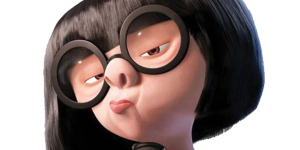 HāfuPeople (and characters) who are half Japanese. |
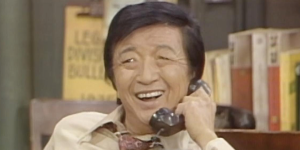 NikkeiPeople of Japanese ancestry born, or living long-term, outside of Japan. |
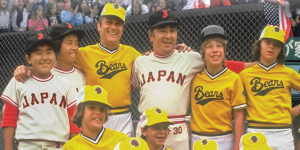 Gaijin in JapanNon-Japanese in Japan.
|
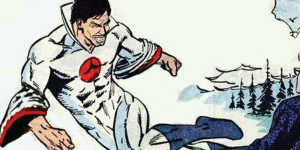 Nihonjin in the WestJapanese born in Japan, often living outside of Japan, who have achievements associated with their time outside of Japan |
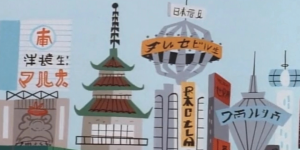 Japanifornia LocationsLocations that exist in the Japanifornia Universe, from video game settings to fictional movie locations. |
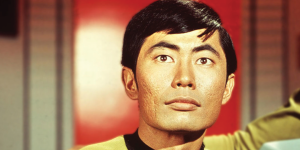 Nikkei who were InternedNotable Japanese Americans who spent time in an American Internment Camp during WWII.
|
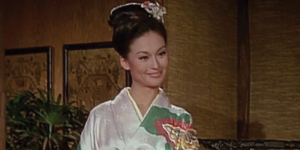 The 1970sThe Age of Independence: When kids roamed free, TV was on a strict schedule, and the music was on vinyl. I lived in the mid-west and found my movies on UHF channels, usually on Saturday afternoons. |
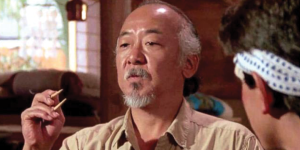 The 1980sThe Cable Age: So many channels, so little that's good. We made mix tapes and bumped them in our Sony Walkman or car stereo. I was living in Baltimore or going to college in New York. |
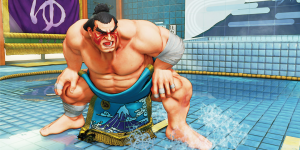 The 1990sThe Console Age: Alternative lifestyles, and the rise of the Digital Age. Our music was on CD, which you could buy new or used. We wore a lot of flannel and black jeans. I, myself, lived in San Franokyo. |
Suggested Starting Points:
We tend to follow rabbit holes for Japanese and Japanese American character actors from the 70s and 80s.
Japanifornia Icons
- Miyoshi Umeki the first Eastr-Asian actor to win an Academy Award for her role in Sayonara in 1957.
- Larry Shinoda, a Japanese American car designer who designed the Chevrolet Corvette and the Ford Mustang.
- Yuri Kochiyama an American Civil Rights activist who worked with Malcom X in Harlem.
- Hiroshi Fujiwara, the Godfather of Streetwear from Japan, who collaborated with Tinker Hatfield and Mark Parker at Nike to produce the HTM sub-brand.
- Steve Yano, who with Dr. Dre and Tony A. Da Wizard, produced and sold the Roadium Mixed Tapes at Roadium Swap Meet in Gardena, California in the early 1980s.
- Wataru Misaka broke the color barrier in professional basketball when he played three games for the New York Knicks in 1947.
- Sessue Hayakawa was a Japanese actor and matinee idol during the silent film era of the 1910s and early 1920s.
- Sono Osato was a half Japanese dancer in the 30s, and later an activist and philanthropist.
- Isamu Noguchi was a half Japanese sculptor and artists.
- Rocky Aoki founder of Benihana, and incorrigible 60s and 70s philanderer.
ChatGPT Nikkei Top Ten
- Yuri Kochiyama, 1921-2014, human rights activist
- Michio Kaku, born in 1947, theoretical physicist and science communicator
- Ellison Onizuka, 1946-1986, astronaut who died in the Challenger space shuttle disaster
- Kristi Yamaguchi, born in 1971, Olympic gold medalist figure skater
- Sab Shimono, born in 1943, actor and director
- Fred Korematsu, 1919-2005, civil rights activist
- Sessue Hayakawa, 1889-1973, actor and producer
- Patsy Mink, 1927-2002, first woman of color elected to the U.S. Congress
- Richard Aoki, 1938-2009, civil rights activist and member of the Black Panther Party
- Steven Okazaki - documentary filmmaker who has won numerous awards, including an Academy Award for Best Documentary Short Subject in 1991.